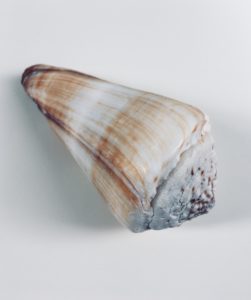Cabal, is a term defined in the Merriam-Webster dictionary, as the contrived scheme of a group of persons secretly united in a plot (as to overturn a government, for example).
But, if you talk in terms of Biology, cabals are also a series of synergistic venom peptides essential for the capture of prey. One animal venom can be a complex mixture of 10-200+ short chains of amino acids linked by bonds (peptides), working in a concerted mode to regulate physiological function, with very potent and precise molecular targets1.
For example, cone snails, a small venomous marine mollusk that hunts fish and worms, has ~850 species identified, with each expressing many thousands of unique peptides that selectively target a diverse range of voltage- and ligand-gated ion-channels, transporters and G-protein couple receptors2.
These tiny wonders of nature have the ability to switch between predatory and defensive venom regimes. For example, if they just want to stunt a predator causing a flaccid paralysis, they will produce venom that has high levels of muscle blockers (motor cabal), and that inhibit sodium channels and nicotinic acetylcholine receptors. But, if in the mean time, they change their minds and intend to eat the prey, they use a combination of peptides that cause a rigid paralysis. This lightning-strike cabal has excitatory peptides that inhibit potassium channels and delay inactivation of sodium channels, causing the prey to lie “dead” until it is happily digested in an underwater banquet.
But, how does the cone snail decide whether it is fear or hunger that it’s “feeling” in that moment?
The simple neuronal circuit of the cone snail shifts from a contented state of inertia, to an active motion, stimulated by internal hunger and an appetite stimulus – just like us, slushing from the couch to the fridge looking for our night prey… The hunting activity of the Conus is then organized by a basic set of behavioral transitions. Once the cone snail detects a fish, through sensory signals, it becomes much more active and moves towards the fish extending its rostrum– a massive funnel formed by the muscular walls of the snail sheath; and, a long, thin trunk extends out in the open, where a harpoon-like tooth shoots out to pierce the skin of the fish3 – imagine if we could actually do the same to that bag of cookies that is lying in the shelve right next to the couch.
The active feeding of the cone snail tends to inhibit the avoidance, and the snail changes to a prevention mood once its appetite is satisfied4.

Reference:
1. Angell Y, Holford M and Moos WH. Building on Success: A Bright Future for Peptide Therapeutics. Protein Pept Lett. 2018;25:1044-1050.
2. Himaya SWA, Mari F and Lewis RJ. Accelerated proteomic visualization of individual predatory venoms of Conus purpurascens reveals separately evolved predation-evoked venom cabals. Sci Rep. 2018;8:330.
3. Olivera BM, Seger J, Horvath MP and Fedosov AE. Prey-Capture Strategies of Fish-Hunting Cone Snails: Behavior, Neurobiology and Evolution. Brain Behav Evol. 2015;86:58-74.
4. Gillette R and Brown JW. The Sea Slug, Pleurobranchaea californica: A Signpost Species in the Evolution of Complex Nervous Systems and Behavior. Integr Comp Biol. 2015;55:1058-69.
